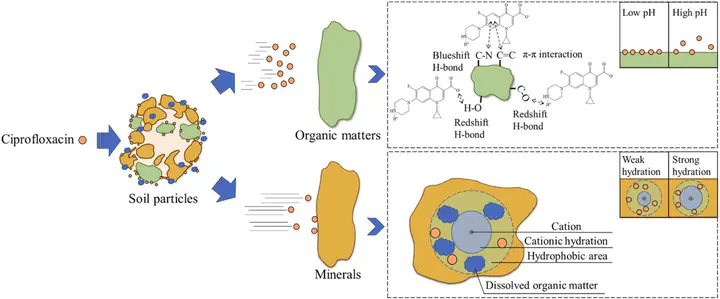Ciprofloxacin sorption to purple soil: Potential mechanisms and factors influencing sorption

Abstract
Understanding ciprofloxacin sorption behavior onto purple soil is essential to minimize the associated environmental risks. However, CIP sorption onto the different components of purple soil and its underlying mechanisms are poorly understood. We performed a sorption experiment using original purple soils, soils without dissolved organic matter, and soils without organic matter to explore the CIP sorption behavior. Compared with DORI and YORI, the CIP sorption capacity of DM and YM decreased by 67.1% and 75.7%, indicating that the CIP sorption capacity was mainly contributed by OM. Compared with DORI and YORI, the CIP sorption capacity of DIOM and YIOM increased by 17.1% and 12.6%, suggesting that DOM in soil affected CIP sorption in purple soil. Redshifts and blueshifts confirmed that H-bonds and π-π interaction dominated the CIP sorption onto OM. CIP sorption was fitted by the Langmuir model, indicating monomolecular sorption. Compared with DORI and YORI, the KL of DM and YM was higher, implying that CIP sorption was faster and easier on minerals than on OM. Compared with K+, Ca2+ had a stronger hydration capacity but lower CIP sorption capacity in DM, suggesting that the stronger hydration capacity of cations was not conducive to CIP adsorption onto minerals and proving that the hydrophobic effect drove CIP adsorption. These mechanistic insights have important implications for understanding CIP sorption in purple soil.